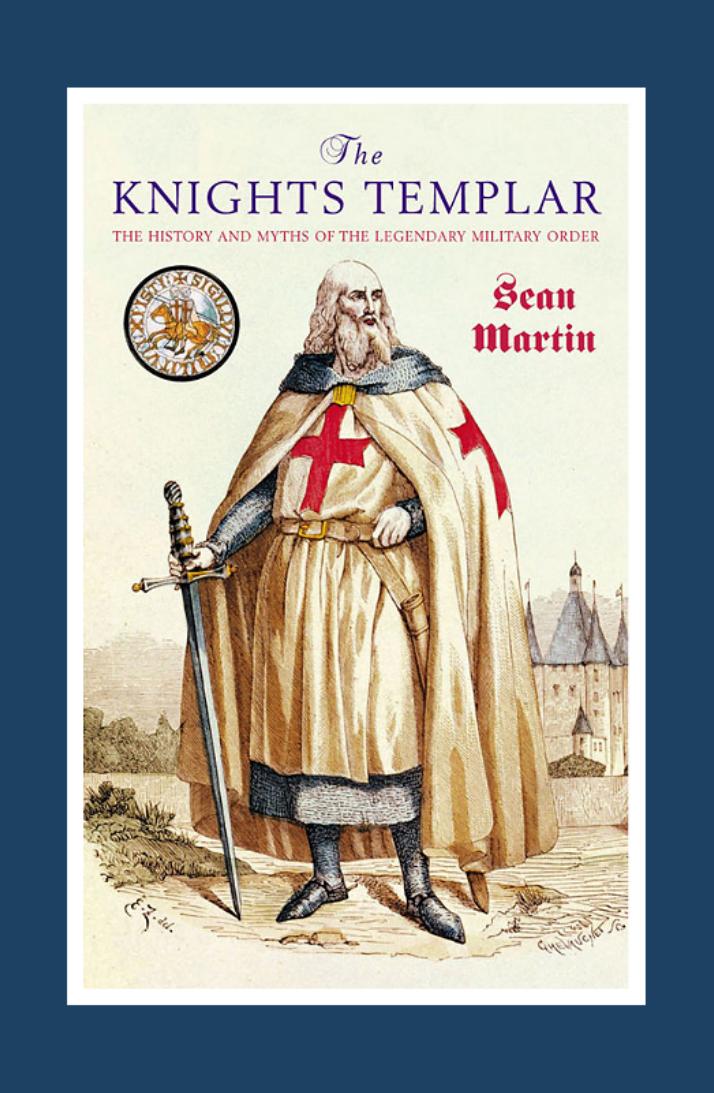The Knights Templar by Sean Martin

Author:Sean Martin
Language: eng
Format: epub, pdf
Published: 2017-12-16T05:00:00+00:00
The Other Military Orders
One unexpected development in the Latin East after the end of the Third Crusade was the establishment of a new military order. In 1197, German crusaders had arrived in the East; they were largely unsuccessful, their sole military contribution being their participation in the capture of Beirut that year. Most of the German crusaders returned home, but a number of knights remained in the East, and joined a field hospital that had been set up in 1190 by merchants from Bremen and Lübeck. During the siege of Acre in 1191 they were said to have welcomed brothers from the Hospital of St Mary of the Germans, which, tradition holds, was founded in Jerusalem in 1127. The new hospital’s first base in Acre was a tent on the shore made from a ship’s mainsail. When the knights joined, they became the Teutonic Knights of St Mary’s Hospital of Jerusalem, and on 5 March 1198, the Teutonic Knights were accepted as an order of the church at the Temple compound in Acre.
The Teutonic Knights were the last of the three great military orders to be founded. The first of them, the Hospitallers, had been founded before the formation of the Templars, sometime around 1070. The Hospital – founded by a group of merchants from Amalfi – was originally that of St John the Almoner, and it operated an infirmary and guest house for pilgrims near the Church of Holy Sepulchre. The first Grand Master was Peter Gerard, who was elected in about 1100. As soon as the Kingdom of Jerusalem was established, Godfroi de Bouillon donated lands to the Order, and many others followed suit, with the result that the Hospitallers had extensive holdings in Europe as well as the East. The capture of Jerusalem in 1099 led naturally to the influx of a greater number of pilgrims than ever, and it was decided that a more prominent patron saint should be adopted for the Order: John the Almoner was replaced by John the Baptist. The Hospital was recognised as an order by Pope Paschal II (1099–1118) in 1113.
The Order’s second Grand Master, Raymond de Puy, oversaw the Hospital’s adoption of an increasingly military role. In the early years, it is possible that Templars were used to guard the Hospital’s establishments, but during the 1120s it seems that the Hospitallers themselves started to militarise. A Hospitaller constable is mentioned in documents dating from 1126,19 but the first firm date for military activity is 1136, when King Fulk gave the Order the castle of Gibelin, on the Gaza–Hebron road. Like the Templars, the Hospitallers received papal privileges: Innocent II (1130–43) forbade bishops to interdict Hospitaller chapels; Anastasius IV (1153–54) gave them their own priests; while Adrian IV (1154–59) gave them their own churches. Their rule evolved slowly, with Raymond being guided by pragmatic concerns. Like the Teutonic Knights after them, some of the Hospital’s statutes were modelled on those of the Templars.
In addition to the Hospital and the Teutonic Knights, there were several smaller orders active in the East.
Download
This site does not store any files on its server. We only index and link to content provided by other sites. Please contact the content providers to delete copyright contents if any and email us, we'll remove relevant links or contents immediately.
| Africa | Americas |
| Arctic & Antarctica | Asia |
| Australia & Oceania | Europe |
| Middle East | Russia |
| United States | World |
| Ancient Civilizations | Military |
| Historical Study & Educational Resources |
Room 212 by Kate Stewart(4110)
The Crown by Robert Lacey(4108)
Endurance: Shackleton's Incredible Voyage by Alfred Lansing(3850)
The Iron Duke by The Iron Duke(3642)
The Rape of Nanking by Iris Chang(3518)
Killing England by Bill O'Reilly(3459)
Joan of Arc by Mary Gordon(3262)
Say Nothing by Patrick Radden Keefe(3065)
I'll Give You the Sun by Jandy Nelson(2843)
Hitler's Monsters by Eric Kurlander(2735)
Shadow of Night by Deborah Harkness(2721)
Margaret Thatcher: The Autobiography by Thatcher Margaret(2687)
Mary, Queen of Scots, and the Murder of Lord Darnley by Alison Weir(2679)
Darkest Hour by Anthony McCarten(2649)
Blood and Sand by Alex Von Tunzelmann(2610)
Red Famine: Stalin's War on Ukraine by Anne Applebaum(2467)
Eleanor & Park by Rainbow Rowell(2396)
The One Memory of Flora Banks by Emily Barr(2349)
Book of Life by Deborah Harkness(2267)
